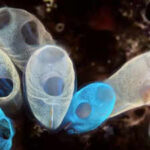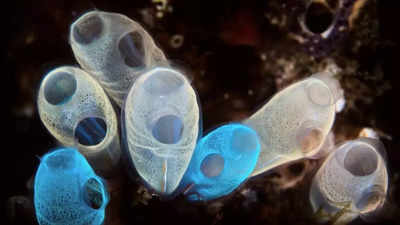The tiniest pieces of plastic in the ocean could become even more dangerous after being eaten by this marine creature! A study from Tel Aviv University has unveiled concerning findings about how microplastics interact with marine ecosystems, highlighting a new threat to ocean health. This research reveals that filter-feeding marine creatures play a significant role in altering the composition and behaviour of microplastics, leading to unforeseen dangers for marine life.
Microplastic pollution cycle
While earlier studies have centered on the dangers of marine animals ingesting microplastics, this research pushes it further by considering how these particles change after having been processed by filter feeders. The study, led by PhD student Eden Harel together with Professors Noa Shenkar and Ines Zucker, focused particularly on ascidians, marine organisms known for their ability to filter small particles from water.
The researchers aimed to understand how microplastics transform as they pass through the digestive systems of these creatures.As per earth. com “We aimed to examine whether and how plastic changes after passing through the digestive system of a marine organism and how this process affects the presence of plastic and its availability to other organisms,” explained Shenkar.

How do these marine creatures transform microplastics?
In a controlled laboratory setting, the team simulated ocean conditions with ascidians and introduced two types of microplastics: polystyrene (PS), a typical plastic, and polylactic acid (PLA), a biodegradable alternative marketed as eco-friendly. They observed the filtration, digestion, and excretion processes over 48 hours.
The results highlighted significant differences between the two plastics. Ascidians effectively removed 90% of polystyrene particles within two hours; however, these particles were later released back into the water after digestion. In contrast, polylactic acid particles showed a marked decrease in concentration and seemed to break down during digestion into smaller, undetectable nanoparticles. This suggests that while some microplastics remain intact, others may fragment into smaller pieces, potentially increasing their environmental impact.
Microplastics disguised as organic matter
To investigate the transformations microplastics undergo during digestion, the researchers employed Raman spectroscopy to analyse particles expelled by the ascidians. Surprisingly, they found that these plastic particles were no longer recognisable as plastics but appeared as organic matter due to a fecal coating acquired in the digestive system. The findings revealed that microplastic particles are excreted from the ascidian’s digestive system coated with a fecal layer, and it is likely that the marine environment also identifies these particles as this organic material.
This transformation increases the risk of these particles being consumed by other marine animals that feed on feces, further embedding microplastics into the food web. Additionally, this fecal coating promotes bacterial growth and allows pollutants like heavy metals and residual organic compounds to adhere to these particles, making them even more dangerous. Plastic particles undergo many transformations in the environment turning them into carriers of pollutants and diseases within the food web.
Impact on marine feces
The study also examined how microplastics affect the properties of feces, an essential nutrient source for many marine organisms. Feces containing microplastics exhibited notable changes in behaviour.
- Rapid sinking: Unlike regular feces that sink slowly and provide nourishment to organisms below, feces with microplastics sank quickly to the ocean floor. This deprives marine life in the water column of an important food source.
- Localized accumulation: The faster sinking resulted in feces and microplastics accumulating near filter feeders rather than dispersing evenly throughout the ocean. This buildup can lead to increased carbon and nitrogen levels on the seafloor, promoting algal blooms that disrupt marine ecosystems.
The complexity of microplastic pollution
This research highlights that microplastic pollution is far more complex than previously understood. The transformation of plastics through biological processes creates unexpected consequences for marine environments. Plastic pollution in the marine environment has many unexpected dimension and at times neither we nor the environment can even recognise it as plastic.
The microplastic pollution infiltrates marine ecosystems in unpredictable ways, this study is a reminder to address this crisis. As the Microplastics have become carriers for pollutants, disrupt food webs, and harm the environment. Therefore, to tackle this, we require a better strategy that includes the creation of waste management systems and materials friendly to the environment, without fragmenting into harmful nanoparticles.











